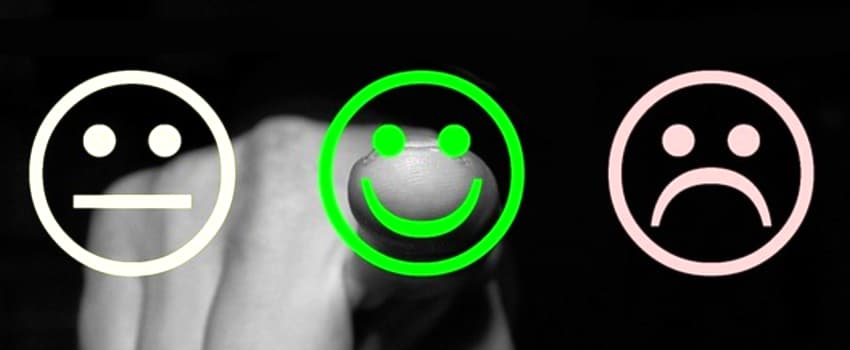
How Many of Your Employees Are Happy with Your IT Service Desk?
One of the most popular, and “strongest,” industry measures of IT service management (ITSM) and IT service desk performance is customer satisfaction. You can’t argue that it’s not an important service desk metric – and super-important if you’re seeking to improve on your customer/employee experience. But how true a measure is it of what the business, and employees, think of your IT support?
With this blog, I want to get you thinking about your current “employee happiness” metrics and show you how the reality might be different to what your monthly performance reporting is saying – let’s call it an “expectations gap.”
Potential Issue #1 – The Wrong Line of Questioning
At this point you might be thinking:
“Oh, I know where this is going – that we often ask the wrong questions in our CSAT (customer satisfaction) surveys and thus get the wrong answers.”
It’s a fair point to make, and one of the key issues with current CSAT practices, but it’s probably not the only cause of this “expectations gap” issue. It’s definitely worth highlighting the issues though, because it contributes to the overall disconnect between service provider and service receivers.
So, have you ever stopped to think about the type of answers your CSAT questions elicit? For instance, are you too focused on checking whether the IT support process(es) worked instead of getting a true indication of how the customer felt about the service and support received?
To highlight the potential issue, consider a restaurant CSAT survey that asks:

- Was it easy to book a table?
- Was your food as expected?
- Was your bill correct?
And the customer responds “yes” to all the questions.
But are they really happy? And will they return? Sadly, we don’t know because we don’t actually know if they had a good, ideally enjoyable, experience.
Potential Issue #2 – Low Response Rates
“Oh wait, I know! It’s because only a small number of employees (who are helped by the service desk) bother to provide feedback.”
And your IT organization would not be alone in getting a less than 10% response rate to service desk (and other) CSAT questionnaires. It’s a valid cause of the expectations gap but probably still not the most critical. Stop for a moment to think about CSAT surveys elicit responses.
Think about when you receive CSAT surveys in your personal life – do you ever respond? And when you do, what drives you to respond? Is it the timeliness of the survey? The number and focus of the questions? The time you think it will take (to respond)? Your respect for (or even love of) the supplier? Extreme levels of satisfaction or dissatisfaction – where you want someone to be either praised or “punished”? Or maybe the chance to win a prize? Consider the things that will make or prevent employees responding to IT service desk CSAT surveys.
Simplicity rules with CSAT questionnaires, as does the aforementioned asking the right question(s) at the right time and projecting the impression that responses will be acted upon. Otherwise your organization is creating an environment for “CSAT bias” where only a certain, and small, subset of customers will feel motivated enough to take the time to provide feedback.
The Really Big Issue (#3)?
While potential issues 1 and 2 are important to understand and address, there’s an even bigger issue for IT support teams to contend with: the proportion of the employee base that actually use the IT service desk.
Think about current service desk metrics and data. Most IT service desks can tell how many times a year (on average) an employee will contact them – even if they don’t report this statistic in their monthly performance metrics. But how many service desks report the relative proportion of the employee base that contact them? It’s these employees who provide the CSAT feedback – which means that the feedback is based only on the employees that are willing (or perhaps need) to contact the service desk. It sounds like another level of CSAT bias, doesn’t it?
Surely a use-based metric could provide some form of measure as to how “good” IT support is, as well as extending any analysis of employee happiness?
So, What Proportion of Employees Actually Use Your IT Service Desk?
As with most measures, this isn’t going to be perfect. And measuring the trend over time will probably be more informative than the result for any given month versus a “guesstimated” target.
There are also, of course, many things that will need to be considered in this context. For instance, self-service and automation use – as just because the end user doesn’t need to contact the service desk directly, it doesn’t mean that they aren’t using, and benefitting from, IT support capabilities. Hopefully, such use will be identified and added into the metric calculation (as well as CSAT canvassing re such help channels).
What this measure really needs to highlight is where employees are going elsewhere for help (which isn’t necessarily a bad thing) or struggling on in silence (which probably is).
Plus, when the CSAT metric of 95% is reported, it should be made clear that it’s not that the majority of employees are happy. It’s not even that the majority of employees that use the service desk are happy. It’s that the majority of employees who used the service desk and felt motivated to provide feedback are happy!
So, making a simple calculation to prove the point here: If 60% of employees use the service desk (this is probably very generous) and only 10% inputted to the 95% CSAT feedback, then less than 6% of employees are happy. But it doesn’t mean that the other 94% are unhappy, however it does mean that more attention should be paid to understanding more about this potentially overlooked majority.
Why? It’s not really about showing that the IT service desk is great. It’s instead about understanding the true cost of IT issues to the organization and whether this can be reduced. This may or may not be that an employee is struggling on in silence, with a cost to their productivity. Or it might be that the cost of self-helping – through the use of Google, say – might far outweigh the equivalent service-desk provided support. With this cost not only the employee labor cost but also the adverse effect on business operations.
So, what do you think? Should your IT service desk be happy that only 6% of employees are happy with them? Or is there more that could be done to get a bigger picture perspective on how well the service desk is performing – including understanding the percentage of employees that use the service desk and whether this is declining (even when incident volumes are rising)?






